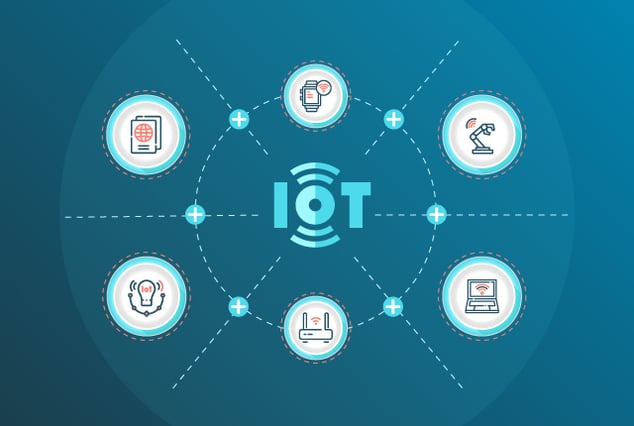
With 31 billion IoT devices on the market today, it’s safe to say that the Internet of Things isn’t going anywhere anytime soon. From manufacturing and transportation to daily consumer life, IoT devices have integrated so seamlessly within our business and personal lives that it’s hard to imagine life without this technology.
What’s even harder to comprehend is that many IoT devices on the market still don’t receive proper IoT automation testing before getting into the hands of consumers. Because IoT is all about connected integration, an untested IoT device can be vulnerable to attacks, impacting millions of IoT devices across networks.
The answer to this problem is simple - apply an IoT automation testing strategy to your QA practices.
This, of course, leads to even more questions. For example, what is IoT Testing? How are IoT devices different from other devices? What challenges should QA teams anticipate from IoT Testing? And what benefits of IoT automation testing can your team expect?
Let’s explore how to tackle these obstacles so that your IT team can enjoy the benefits of IoT automation testing sooner and at higher returns.
What Is IoT Testing?
Internet of Things testing - or IoT Testing - is the practice of performing QA tests to verify the functionality, security and performance of an IoT device. Since every IoT device relies on the Internet to transmit data from one object to another, it’s essential to validate that your IoT devices can transmit sensitive information wirelessly before market launch. Many successful companies within the IoT space rely on IoT Testing tools and an IoT test automation framework so that any issue is uncovered before it reaches consumers.
IoT Testing involves every device, no matter its shape and size. From smart TVs and smart appliances to commercial security systems and traffic monitoring technologies, any “smart” device requires automation testing in IoT.
How Are IoT Devices Different From Traditional Software Devices?
An IoT device is never alone. Because IoT is the integration of several things, an IoT device requires advanced integration skills, IoT automation testing and end-to-end thinking. IoT organizations encounter development and testing problems not experienced at traditional software companies, such as how to integrate edge devices to the IoT platform and how to integrate the IoT platform to enterprise services and applications.
Overcoming these integration challenges can be done, especially when the business forms an IoT solutions team. With an IoT architect in charge and a variety of SMEs on standby, issues can be diagnosed, challenges can be solved and smarter ways to execute development cycles and IoT automation testing tools can be implemented.
Challenges in IoT Testing
The best IoT Testing strategies anticipate all obstacles that can potentially impact the developers, QA engineers and end users. Examine these common challenges in IoT Testing so that your IoT test automation framework is a step ahead of any possible issue.
-
High Count for IoT Devices
Let’s look at the numbers. Each IoT device has both hardware and software designed to integrate with other IoT devices which have their own hardware and software. That means IoT Testing involves test cases for every type of hardware and software the IoT device may encounter - that’s a lot of testing!
In truth, it’s impractical for your IoT Testing tools to run through every possible scenario for your IoT device. For effective testing, consider creating test cases for the most sensible combinations of integrations before market launch. Then, keep a communication channel open with your customers to better understand which hardware and software versions are most impactful to your IoT device.
-
Security Vulnerabilities
Even today, more than half of IoT devices are vulnerable to security threats. And once cybercriminals discover a loophole to access your IoT device, they can potentially access a wealth of sensitive information within your product and those IoT devices within the network.
To combat this, your IoT test automation framework should focus on detecting any security holes. Your QA team can start by verifying proper implementation of the password policy within the IoT device. Execute tests through your IoT automation testing tools that examine all password prompts and behavior within the IoT device on initial user access.
-
Various Cloud Platforms
The functionality of your IoT device depends on its connectivity with a variety of cloud platforms, including Azure, IBM Watson and AWS. Automation testing in IoT requires your IoT device to be tested across all these cloud platforms. That way, QA testers can confirm that all structured and unstructured data generated in a real IoT ecosystem maintains accuracy and integrity.
But it’s unfeasible to test every IoT device running on different cloud versions in a real environment. Between cloud version upgrades and not having access to every IoT device, your IoT Testing tools simply can’t run every possible scenario. Instead, choose to run your IoT device across all cloud platforms, including operating systems and browser types (if applicable), to verify that your IoT device works seamlessly and efficiently within the network.
-
Network Configurations
IoT is all about instant communication at any moment. However, your IoT device can fall victim to poor network configurations, from inconsistent Internet connections to encumbering channels. If your IoT device isn’t prepared for network unpredictability, you can expect your consumers to be displeased with the experience.
When IoT Testing involves a review of all unstable network conditions, your QA team can ensure your IoT device’s correctness. Perform test cases that emulate different network conditions of load, stability and connectivity. Seek further testing advice from virtualization vendors who regularly validate the performance of their products.
Benefits of IoT Automation Testing
With the right test plan in place, QA engineers and developers can immediately see results by applying IoT automation testing in their QA practices. You can expect to see these benefits when automating your IoT Testing.
-
Easily Scale Test Cases
Because automation testing in IoT streamlines the test creation process, QA teams can scale test cases based on product demand from one development cycle to the next. QA engineers can also schedule IoT automation testing tools to execute test cases overnight, allowing for more time to analyze and report test results during work hours.
-
Test Various Connectivity Scenarios
IoT Testing involves heavy review on how an IoT device handles varying connectivity scenarios, many of which are tedious or impossible to run manually. An IoT test automation framework can handle performing all types of possible instances by running automated test cases through your IoT Testing tools, ensuring accurate results before market launch.
-
Improve Test Coverage
IoT automation testing tools can support more test flows as well as a variety of app versions, mobile devices and operating systems. Because automation testing in IoT can perform test cases faster, defects can be discovered at earlier stages of the project life cycle. And with less issues deployed into production, consumers can enjoy a seamless experience and businesses can enjoy a better ROI.
-
Decrease Hardware Resources
IoT Testing allows testers to simulate the behavior of the actual component accurately, eliminating the time and access constraints for dependent services and components. In addition, running functional and performance testing simultaneously removes hardware requirements that can be a burden for resource-constrained companies, business-critical infrastructure and third-party systems.
Here’s How to Test IoT Security
Testing the security of your IoT device should always be a priority. We recommend creating a testing strategy that addresses how to validate the following potential security issues:
- Insecure web interface
- Insufficient authentication and authorization
- Insecure network services
- lack of transport encryption
- Privacy concerns
- Insecure cloud interface
- Insecure mobile interface
- Insufficient security configurability
- Insecure software and/or firmware
- Poor physical security
Does your IT team not have enough resources to carry out IoT Testing? Choose to partner with a reliable QA service provider like QASource. Our team of testing experts specializes in all aspects of software testing, including best practices for IoT automation testing and running IoT Testing tools. We have years of experience guiding companies like yours implement effective testing practices for their IoT devices and software systems. Get a free quote today.




